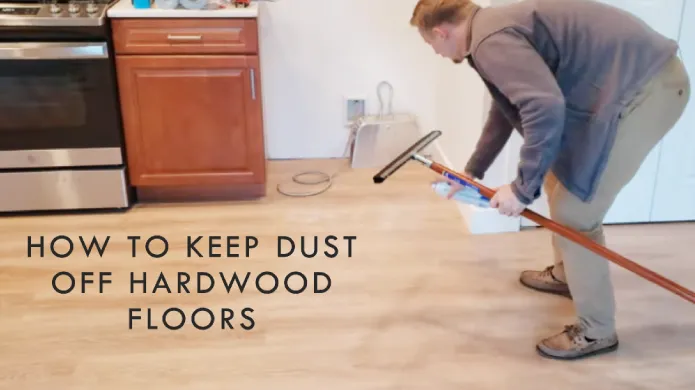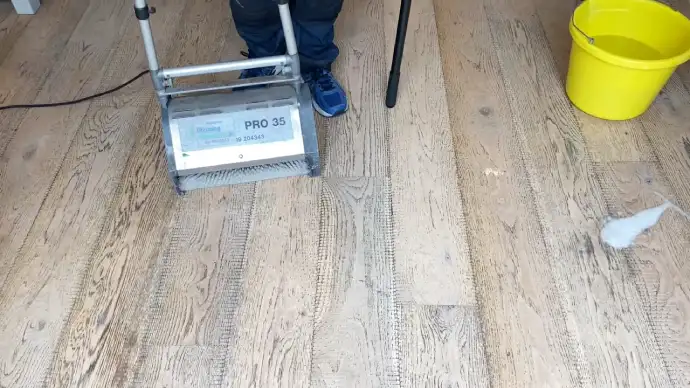How to Keep Dust Off Hardwood Floors: 3 Effective Methods
Hardwood floors add elegance to your living space, but one of them is dust accumulation. Dust can quickly accumulate on hardwood floors, making them look dull and dirty. But, there are effective techniques to keep dust off wooden floors.
To keep dust off your hardwood floors, you can use a powerful vacuum cleaner with a hardwood floor attachment to suck up dust. Also, plastic bristle brooms are great for sweeping away any particles the vacuum missed. In addition, microfiber mops and dusters make floors gleam and dust-free.
Today we will discuss these three effective methods for keeping dust off your hardwood floors. You will also discover why your hardwood floors always seem dusty and what products you should avoid using. So continue reading.
How to Keep Dust Off Hardwood Floors: Three Effective Techniques
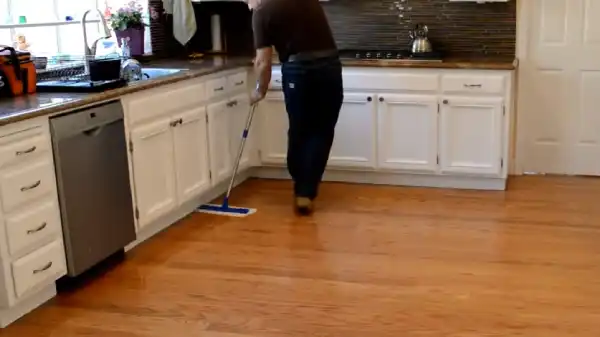
Do you want to keep dust off your beautiful hardwood floors? Well, three effective techniques can help you achieve just that:
#1 Vacuum Cleaners
If you’re looking for a versatile tool to help maintain the cleanliness of your home. In that case, you might consider investing in a vacuum cleaner specifically designed for hardwood floors.
Vacuum cleaners are a great option for removing dust and debris from your floors without causing any damage. Most vacuums come with attachments that can reach tight spaces and corners that traditional tools can’t.
When using a vacuum cleaner, select the bare-floor setting to prevent the beater bar from damaging your floors. Also, keep the beater bar as far away from your floors as possible.
#2 Plastic Bristle Brooms
You might have thought that brooms were only used for sweeping up hay. But these plastic bristle brooms will help you eliminate pesky hairs and crumbs on your hardwood floors.
Unlike traditional brooms, plastic bristle traps and holds dust and debris instead of just pushing it around. The bristles are statically charged, which attracts and holds onto particles, making it easier to sweep up everything in one go.
#3 Microfiber Mops/Dusters
Make your life easier and your cleaning routine more efficient with microfiber mops and dusters. These tools are designed to attract and trap dust particles, making them an effective solution for keeping hardwood floors clean.
Unlike plastic bristle brooms, microfiber mops provide less strain on the body thanks to their lightweight nature. They’re also washable, so you can reuse them multiple times and save money in the long run.
Avoid using too much water or cleaning solution, which can damage your hardwood floors. Keeping your hardwood floors dust-free with the right technique and tools will be a breeze.
How Should You Approach Dusting Hardwood Floors?
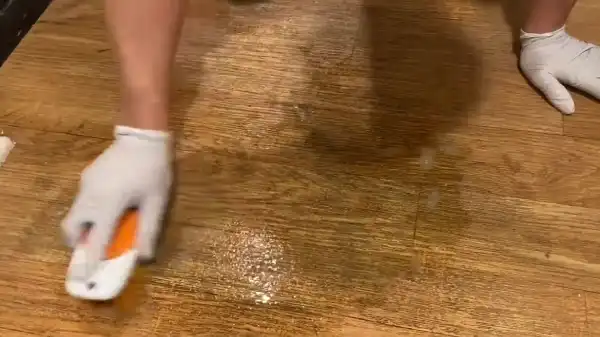
To tackle the dust on your hardwood floors, start working from the top down and dividing the area into manageable sections. Begin at the opposite corner and work your way toward room entrances. This will prevent dust from resettling on the surface you just cleaned.
Use a vacuum cleaner or microfiber mop or duster to collect the dust. Be deliberate in your movements, removing as much dust as possible. If you move too quickly, you risk pushing the dust around, making it harder to collect.
When dividing the room into sections, consider the size of the area you can comfortably clean before taking a break. This will ensure you stay energized and calm.
Also, be sure to clean under furniture and in tight spaces. These areas can be easily overlooked but can accumulate dust quickly.
How can You Keep Hardwood Floors Dust-Free?
Regularly cleaning high-traffic areas and placing a floor mat near the entrance will make your hardwood floors pristine. But preventing future dust from building up on your floors requires a bit more effort.
One effective way is to encourage guests to leave their shoes at the door to prevent dirt from being tracked onto your floors. Daily, You can use a microfiber mop or cloth to pick up dust and debris.
Another tip is to consider adding air filters to your home’s HVAC system to reduce the amount of dust particles in the air. Vacuuming your carpets and upholstery regularly can also help prevent the spread of dust throughout your home.
Why Are My Hardwood Floors Always Dusty?
If you constantly feel like your hardwood floors are as dusty, it may be due to poor air filtration, heavy foot traffic, or pet shedding. These particles accumulate over time, making your floors appear dull and unclean.
Along with these common causes, there are several other reasons your floors may be prone to dust.
Dragging furniture, wearing shoes indoors, and not cleaning them often are all contributing factors. Some other reasons your floors are dusty may include using cleaning products that leave a build-up, tracking in ice and salt during winter, and exposure to sunlight.
Identify the root cause and take appropriate measures to prevent future dust from accumulating on your hardwood floors.
Should You Vacuum or Dust Your Hardwood Floors?
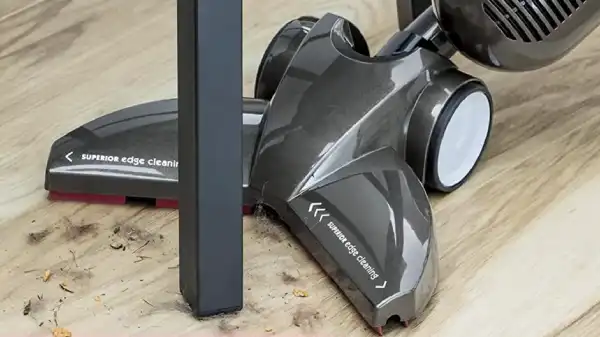
Opting for vacuuming over dusting is a superior choice for maintaining the natural beauty of your hardwood floors. While dusting may seem like a quick and easy way to clean your floors, it can cause scratches and damage over time by spreading dirt and debris around.
Conversely, vacuuming effectively removes all the dirt and debris from your floors, preventing it from causing any harm. Vacuuming is especially important for hardwood floors because it sucks up all the particles that can scratch and damage the surface.
How Often Should You Vacuum Hardwood Floors?
It’s important to give your beautiful wood surfaces a little love and attention by frequently running the vacuum over them. But how often should you vacuum your hardwood floors?
Here are some guidelines to consider:
- Vacuum high-traffic areas at least once a week. These areas include hallways, entryways, and living rooms.
- Vacuum medium-traffic areas every two weeks. These areas include bedrooms and dining rooms.
- Vacuum low-traffic areas once a month. These areas include guest rooms and basements.
Of course, these are just general recommendations. If you have pets, children, or allergies, you may need to vacuum more frequently. The key is to keep an eye on your floors and vacuum them when they look dirty or dusty.
What Should You Not Clean Hardwood Floors With?
It’s best to avoid using these cleaning products on hardwood floors to preserve their pristine appearance:
- Straight ammonia
- Alkaline products
- Abrasive cleaners
- Lemon juice
- Soap-based cleaners
- Steam cleaners
These cleaning products can dull or scratch the finish, leaving your floors damaged. You may be tempted to use harsh chemicals or DIY cleaning solutions, but hardwood floors need gentle care.
Instead, opt for a specialized hardwood floor cleaner specifically formulated to clean and protect your floors. These cleaners are designed to gently remove dirt and grime without damaging the finish or leaving residue behind.
Say Goodbye to Dusty Hardwood Floors: Carefully Clean for Sparkling Surfaces
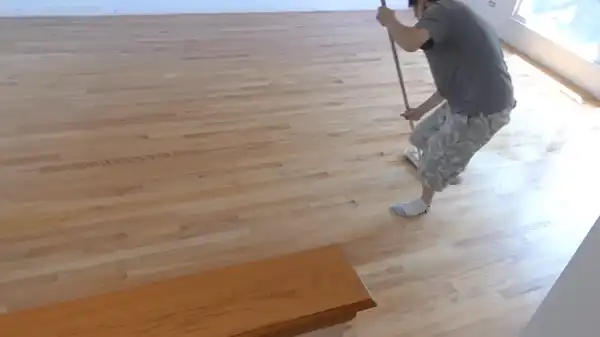
Dust can be a problem on hardwood floors, but it does not have to be. Following a few simple tips and tricks, you can keep your floors looking clean and shiny for years.
From using doormats to choosing the right cleaning products, there are many things you can do to keep dust at bay. When dusting, use microfiber cloths or mops to avoid scratching your floors.
And don’t forget to vacuum regularly, focusing on high-traffic areas and corners where dust accumulates. But be sure to use a vacuum with a hardwood floor setting to avoid damage. So kick off your shoes, and feel the warmth underfoot.

